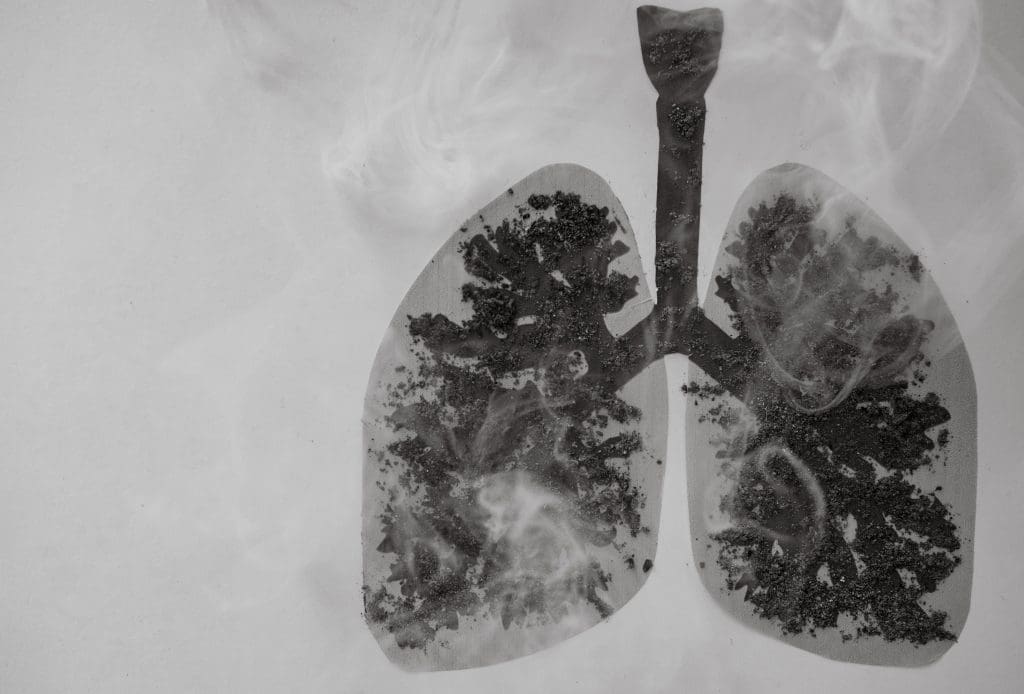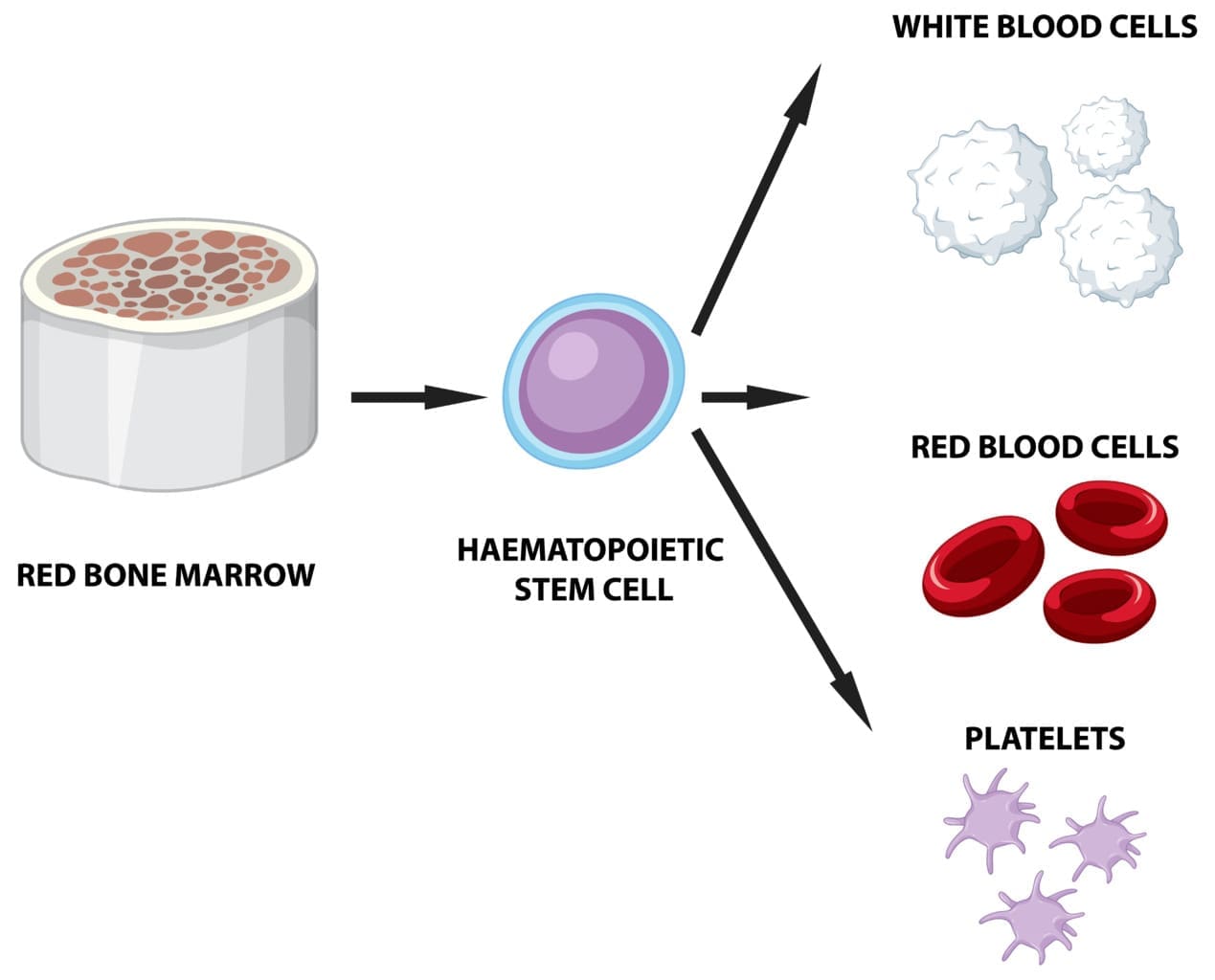Last Updated on November 27, 2025 by Bilal Hasdemir
How do people catch lung cancer? Lung cancer is one of the leading causes of death worldwide, with over 1.8 million deaths each year. Studies show many things can lead to lung cancer, like genetic changes and things in the environment.
Tobacco use is a big reason for lung cancer, with smoking being the main cause. The link between smoking and lung cancer is clear. Smoking is behind 80 to 90 percent of lung cancer deaths.
Key Takeaways
- Lung cancer is a complex disease influenced by multiple factors.
- Tobacco use is a major risk factor for developing lung cancer.
- Smoking is the primary cause of lung cancer deaths.
- Genetic mutations and environmental exposures also contribute to lung cancer.
- Understanding the causes of lung cancer is key for prevention and treatment.
The Biology of Lung Cancer Development

Lung cancer starts with genetic mutations and changes in cells. These changes lead to tumors in the lungs. Many factors, like carcinogens, genes, and lifestyle, play a role in this process.
What Happens in the Lungs During Cancer Formation
When cancer forms, lung cells stop working right. This is because of damage from harmful substances. These substances cause cells to grow out of control.
Tumors then form, making it hard for lungs to breathe and exchange gases.
Types of Lung Cancer and Their Causes
Lung cancer mainly comes in two types: non-small cell lung cancer (NSCLC) and small cell lung cancer (SCLC). NSCLC makes up about 85% of cases. It includes subtypes like adenocarcinoma and squamous cell carcinoma. SCLC is more aggressive and linked to smoking.
The causes of lung cancer are complex. They include genetics, environment, and lifestyle.
Key risk factors include harmful substances like tobacco smoke and radon gas. Genetic changes also play a big part in lung cancer.
How Carcinogens Damage Lung Cells
Carcinogens harm lung cells by changing their DNA. This leads to mutations that mess up cell function. When we breathe in carcinogens, like in tobacco smoke, they damage lung cells over time.
This damage can start cancer by turning on genes that promote growth and turning off genes that stop it. Knowing how carcinogens harm cells helps us fight lung cancer.
Tobacco Use: The Leading Cause of Lung Cancer
Tobacco use is the main cause of lung cancer worldwide. The Centers for Disease Control and Prevention (CDC) says tobacco use leads to over 480,000 deaths in the U.S. each year. Lung cancer is a big part of these deaths.
How Smoking Causes Lung Cancer
Smoking lets harmful substances into the lungs. These substances can damage lung cells’ DNA, causing cancer. A leading oncologist, says, “Smoking is the biggest risk for lung cancer.”
“Tobacco use is the leading cause of preventable death in the United States, accounting for more than seven million deaths worldwide each year.”
World Health Organization
Long-Term Smoking Effects on Lung Tissue
Long-term smoking causes lasting damage to lung tissue. This damage can lead to COPD and lung cancer. Smoking causes chronic inflammation that destroys lung tissue and lowers lung function.
Cigars, Pipes, and E-cigarettes: Assessing the Risks
While cigarette smoking is well-known, other tobacco products also pose risks. Cigar and pipe smoking increase lung cancer risk, though less than cigarettes. E-cigarettes, seen as safer, contain harmful substances that harm lung health.
- Cigar smoking: Increases lung cancer risk due to the inhalation of carcinogens.
- Pipe smoking: Similar to cigar smoking, it poses a risk due to the inhalation of tobacco smoke.
- E-cigarettes: Contain harmful substances like nicotine and volatile organic compounds.
Secondhand Smoke Risk: The Dangers of Passive Exposure
Secondhand smoke is a known risk for lung cancer in non-smokers. It’s important to know how it harms lungs. This knowledge helps us understand the dangers of passive smoking.
Damage to Non-Smokers’ Lungs
Non-smokers exposed to secondhand smoke breathe in harmful toxins. These toxins can cause inflammation and damage in the lungs. The risk is higher for those exposed for a long time, like living with a smoker or working where smoking is allowed.
A study in the Journal of the National Cancer Institute showed a link between secondhand smoke and lung cancer in non-smokers. This risk is higher for those exposed at home or work.
“The evidence is clear: secondhand smoke is a cause of lung cancer in nonsmokers, and eliminating smoking from indoor environments is a critical step in protecting nonsmokers.”
Protecting Family Members from Household Exposure
Secondhand smoke is a big concern in homes, mainly for kids and non-smoking family members. Smoking indoors releases harmful chemicals that can stay in the home. To reduce this risk, making your home smoke-free is key.
- Encourage smokers to quit or smoke outside the home.
- Use air purifiers to help reduce indoor air pollution.
- Educate family members about the dangers of secondhand smoke.
Dangers of Passive Smoking in Public Spaces
Even with smoking bans in many places, passive smoking can happen. Awareness campaigns and stricter rules are needed to lower exposure in public areas.
| Location | Risk Level | Prevention Measures |
| Home | High | Smoke-free home policy |
| Workplace | Medium to High | Smoking ban enforcement |
| Public Spaces | Medium | Stricter smoking regulations |
By knowing the risks of secondhand smoke and taking steps to reduce exposure, we can lower lung cancer rates in non-smokers. Education and policy changes are vital in this fight.
Radon Gas Exposure: An Invisible Threat
Radon gas is a sneaky danger to lung health. It’s invisible and has no smell. This radioactive gas can build up in homes, putting people’s health at risk.
What is Radon and Where It’s Found in American Homes
Radon comes from uranium breaking down in soil, rock, and water. It can get into homes through cracks and openings. The Environmental Protection Agency (EPA) says one in every 15 homes in the U.S. has radon.
“Radon is a serious public health problem,” the EPA warns. It can cause lung cancer over time. Smokers are at even higher risk because radon and smoking together increase lung cancer chances.
The Science Behind Radon-Induced Lung Cancer
Inhaled radon releases harmful particles that can harm lung linings. This damage can lead to lung cancer over time. The risk grows with higher exposure levels.
Key factors that influence radon-induced lung cancer risk include:
- The level of radon concentration in the home
- The duration of exposure to radon
- Smoking status, as smoking and radon exposure have a synergistic effect on lung cancer risk
Testing Your Home and Reducing Exposure
Testing for radon is the only way to know if your home has high levels. You can use DIY kits or get a professional to test. If radon levels are high, you can seal cracks and install ventilation systems.
Reducing radon exposure is key to lung health. Knowing the risks and taking steps to test and lower radon levels can greatly reduce lung cancer risk.
Occupational Exposure and Workplace Hazards
Being exposed to harmful substances at work is a big risk for lung cancer. Many workers face this danger every day. This increases their chance of getting this disease.
Asbestos Lung Cancer: Industries at Highest Risk
Asbestos is a known cause of lung cancer, mainly in construction, mining, and manufacturing. Workers in these fields are at a higher risk. This is because they might breathe in asbestos fibers.
High-risk occupations include:
- Construction workers
- Mine workers
- Shipbuilders
- Demolition workers
Chemical Exposure in Lungs: Workplace Toxins
Chemicals like arsenic, chromium, and nickel are also risky. They can harm lungs when breathed in.
Places that handle these chemicals must take strict safety measures. This is to protect workers.
Workplace Dust Exposure and Protective Measures
Dust in the workplace is a common danger. Employers can fight this by giving out personal protective equipment (PPE). They should also improve air systems.
It’s important to check the air quality often. Employee training on safety is also key.
By knowing the risks and acting early, workers and employers can lower lung cancer cases. This is due to work-related exposure.
Air Pollution Cancer Risk: Environmental Factors
Environmental factors, like air pollution, are major causes of lung cancer. The air we breathe has many pollutants that harm our health.
Urban Air Quality and Cancer Incidence
Urban air quality is a big worry for our health. Studies link poor air quality to more lung cancer cases. Pollutants like PM, NO2, and O3 cause breathing problems and other health issues.
Key pollutants include:
- Particulate Matter (PM): Tiny particles that can penetrate deep into the lungs.
- Nitrogen Dioxide (NO2): A gas that can exacerbate respiratory conditions.
- Ozone (O3): A gas that can irritate the respiratory system.
Industrial Emissions and Their Health Impact
Industrial emissions are a big source of air pollution. Factories and power plants release harmful pollutants, including carcinogens like arsenic and chromium. These increase lung cancer risk, mainly for those living near these sites.
| Pollutant | Source | Health Impact |
| Arsenic | Industrial processes, mining | Carcinogenic, increases lung cancer risk |
| Chromium | Industrial processes, metal manufacturing | Carcinogenic, respiratory problems |
Air Toxins Lung Cancer Connection: What Research Shows
Studies show a clear link between air toxins and lung cancer. Air toxins, like VOCs and PAHs, can damage lung cells and lead to cancer.
Key findings from research include:
- Long-term exposure to poor air quality increases lung cancer risk.
- Certain air toxins are classified as carcinogens.
- Reducing exposure to air pollutants can help mitigate lung cancer risk.
Understanding the link between air pollution and lung cancer is key to prevention. By tackling pollution sources and improving air quality, we can lower lung cancer risk and protect health.
Genetic and Family History Factors
Smoking and environmental factors are known risks for lung cancer. But, genetics also play a big role. People with a family history of lung cancer are more likely to get it.
Family History Lung Cancer: Understanding Hereditary Risk
Having a close relative with lung cancer raises your risk. This risk is higher if the relative got lung cancer young. It’s not clear why, but genetics and environment might play a part.
Key factors to consider when assessing family history include:
- The number of affected relatives
- The age at which they were diagnosed
- Whether they smoked or were exposed to carcinogens
Genetic Mutations Cancer: Specific Genes Involved
Some genetic mutations raise lung cancer risk. For example, EGFR, KRAS, and TP53 gene mutations are common in lung cancer. These can be inherited or caused by environmental factors.
Knowing about these genetic mutations helps in finding targeted treatments. Genetic tests can find these mutations, guiding treatment choices.
Inherited Cancer Risk: Testing and Monitoring Options
Those with a strong family history of lung cancer might need genetic testing and monitoring. This could include regular CT scans, which are good for smokers.
Options for managing inherited cancer risk include:
- Genetic counseling to understand personal risk
- Genetic testing to identify specific mutations
- Regular lung cancer screenings for early detection
Knowing your genetic risk and taking steps can lower your chance of lung cancer. It can also help if you do get it.
Medical and Pre-existing Conditions
It’s important to know how pre-existing medical conditions can lead to lung cancer. Some lung conditions can make you more likely to get lung cancer.
COPD Lung Cancer Link: The Connection Explained
Chronic Obstructive Pulmonary Disease (COPD) is a big risk for lung cancer. Research shows people with COPD are more likely to get lung cancer. This is because COPD causes long-term inflammation in the lungs, which can lead to cancer.
The link between COPD and lung cancer is backed by many studies. For example, a study in the American Journal of Respiratory and Critical Care Medicine found COPD patients are more likely to get lung cancer than those without it.
Lung Disease Predisposition to Cancer
Other lung diseases, like pulmonary fibrosis and emphysema, also raise the risk of lung cancer. These conditions cause long-term inflammation and damage in the lungs. This can lead to genetic changes and cancer.
- Pulmonary fibrosis: A condition that scars lung tissue, making lung cancer more likely.
- Emphysema: A type of COPD that damages air sacs in the lungs, increasing lung cancer risk.
Previous Lung Infections and Cancer Risk
Having had lung infections, like tuberculosis and pneumonia, can also raise your risk of lung cancer. These infections cause inflammation and scarring. This can damage lung cells and lead to cancer.
“The relationship between lung infections and cancer risk is complex and involves multiple factors, including the severity of the infection and the individual’s overall health.”
– Pulmonologist
Knowing about these connections helps us find people at high risk. We can then take steps to screen and prevent lung cancer in them.
Conclusion: Reducing Your Lung Cancer Risk
Knowing the risks for lung cancer is key to taking action. It’s important to understand the dangers of smoking, secondhand smoke, radon, work hazards, air pollution, and genetics. This knowledge helps you make better choices for your health and surroundings.
To lower your lung cancer risk, you need to make lifestyle changes and stay informed. Quit smoking and avoid secondhand smoke. Also, test your home for radon. Being careful at work and protecting yourself from pollution can help a lot. These steps can make a big difference in your health.
By taking steps to reduce these risks, you not only lower your lung cancer chance but also improve your overall health. Understanding and tackling these factors gives you control over your health. It allows you to make changes that benefit your well-being.
FAQ
What are the main causes of lung cancer?
Lung cancer is caused by many factors. These include smoking, secondhand smoke, radon gas, asbestos, and air pollution. Genetic mutations and pre-existing medical conditions also play a role.
How does smoking cause lung cancer?
Smoking harms lung cells by releasing harmful substances. These substances can cause genetic mutations and lead to tumors. Long-term smoking can increase lung cancer risk.
Can secondhand smoke exposure cause lung cancer?
Yes, secondhand smoke can harm non-smokers’ lungs. This increases their risk of lung cancer. Exposure at home or in public places is a concern.
What is radon gas, and how does it cause lung cancer?
Radon is a gas found in homes, often in basements and crawl spaces. Long-term exposure can damage lung cells, raising lung cancer risk.
How does occupational exposure to asbestos and chemicals affect lung cancer risk?
Exposure to asbestos and chemicals at work can increase lung cancer risk. This is true for jobs in construction, mining, and manufacturing.
Can air pollution cause lung cancer?
Yes, air pollution, like in cities, can raise lung cancer risk. Industrial emissions and toxins can harm lung cells, leading to cancer.
How does family history influence lung cancer risk?
Family history can affect lung cancer risk, due to genetic mutations. Knowing your risk can help you take steps to lower it.
What is the link between COPD and lung cancer?
COPD is a big risk factor for lung cancer. People with COPD are more likely to get lung cancer because of lung damage and inflammation.
Can previous lung infections increase the risk of lung cancer?
Yes, lung infections can raise lung cancer risk. Infections like tuberculosis can cause inflammation and scarring, leading to cancer.
How can I reduce my risk of developing lung cancer?
To lower lung cancer risk, avoid tobacco and secondhand smoke. Test for radon and avoid work hazards. Be aware of air pollution. If you have a family history or medical conditions, monitor your health closely.
Are e-cigarettes a safer alternative to traditional tobacco products?
E-cigarettes might seem safer, but their long-term effects are not fully known. They can contain harmful chemicals, so caution is needed.
How can I protect myself from workplace dust exposure?
To avoid workplace dust, wear protective gear and follow safety rules. Make sure the workplace has good ventilation.






